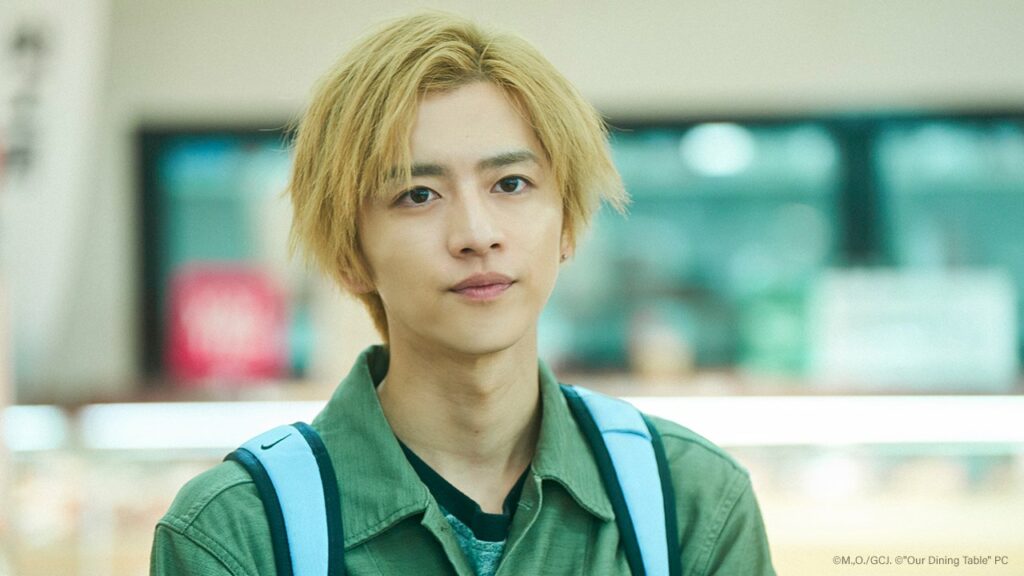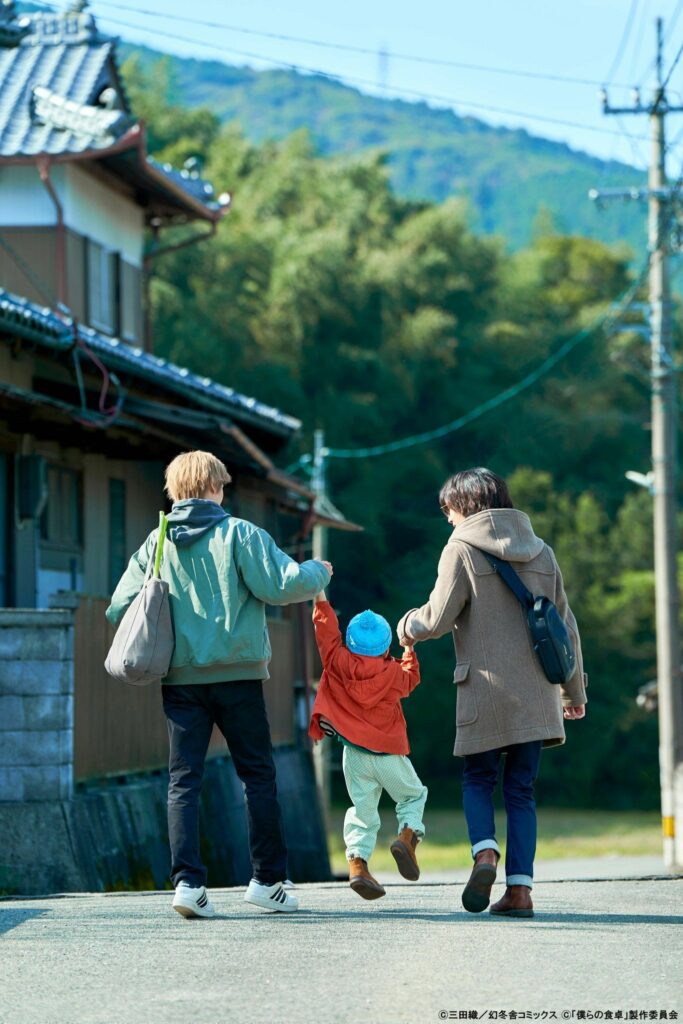Our Dining Table aka Bokura no Shoukutaku is a BL manga about an office worker named Yutaka who bonds with a younger man, Minoru, and his little brother, Tane, over food, food prep, and cooking. If you want a more detailed description of this manga, check out our previous manga recommendation.
This time around, I want to talk about the live-action adaptation that was first aired in April 2023, on BS-TBS.
This adaptation makes more of an effort to establish the conditions of the salaryman and the sense of loneliness than the manga does. The live adaptation sets up why Yutaka does not join in with his coworkers, how he eats alone, and how he ends up agreeing to teach Minoru how to make his grenade-sized onigiri.
Pace
The pace of the show seemed a little too slow for me since each episode is a depiction of one chapter. This is fine if you’re the type of person who enjoys watching slow-moving shows about mundane tasks. But that couldn’t be me.
The saving grace of reading a slice-of-life manga is that I can read at whatever pace I want to—unless you’re cursed with having to wait each week, for the next chapter. But even within the constraints of waiting for a chapter each week, the experience of reading the chapter is very individualized. You could speed up the show if you wanted to, but some of the slow moments meant to show appreciation might be lost. It all comes down to the fact that it is slow-paced, and if you seek something faster-paced, skip this live-action.
Casting
The casting is very good. With the introduction of each character, you immediately know who is who—though I have a personal grudge against Minoru’s hair in the live-action adaptation. Why is the hair so close in value to the skin tone??? Why can’t it be toned? Just awful in my eyes.

Tane is a little different from his manga version, but it does not diminish how cute this kid is. In the manga, a lot of the cuteness comes from the familiarity Tane immediately has with Yutaka. On the other hand, in the live-action, the cuteness comes from how bubbly and lively the kid is, the joy he springs into any situation. In both versions, Tane’s small stature and tiny hands come into frame in the cutest ways. How can a child be so small yet full of so much energy? Such a good kid.

Sound Design
This show utilizes chill, soothing music that compliments the slow pace of the show. Not too dramatic, not too bubbly either, just the right balance of moody and cheery without being too cheesy.
Visuals

In the manga, there is less of a focus on the background or the town the story is set in. In the live-action, the emphasis on empty streets, empty parks, and soft lighting giving the town this series is set in a soap opera feel. The shoujo type of filter that blurs all the imperfections gives you a visual clue that romance is in the air, but when?

Many of the shots and framing of scenes in the live-action are call-backs to certain scenes in the manga—without being exact copies. This similarity gives enough of a nod that people who read this manga when it first came out will have their memories brought back to the surface, reminding you of the most emblematic moments and funny (not funny ha-ha, funny you don’t know how to cook) little things that Minoru first did, like not cleaning the rice cooker. This man had his little brother eating yellow rice?! Yellow rice?! It wasn’t yellow before getting into the cooker, so I wonder how he justified feeding and eating suddenly yellow rice.
All in all, I would recommend this live-action to those who like BL shows with little drama and mostly good vibes. People who enjoy having a chill show to watch to unwind to, look at people enjoying cooking and preparing food for others. People who enjoy watching others enjoying the food they made. If you have not read the manga, this series will not be confusing since it has such a simple premise.
6/10.




Recent Comments